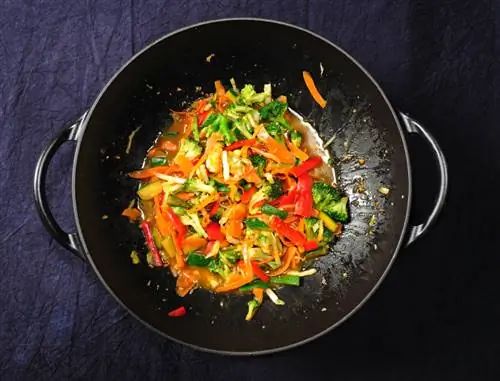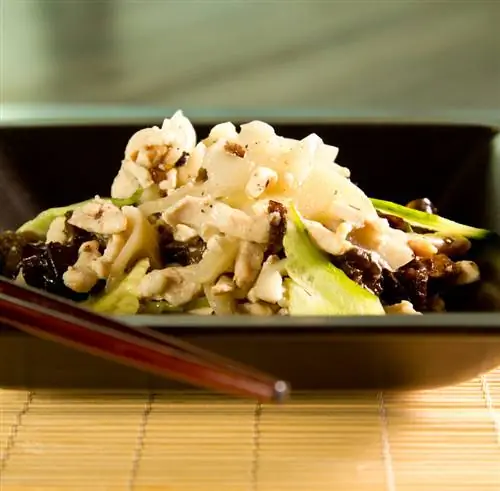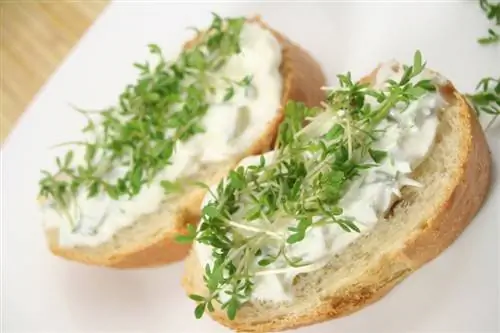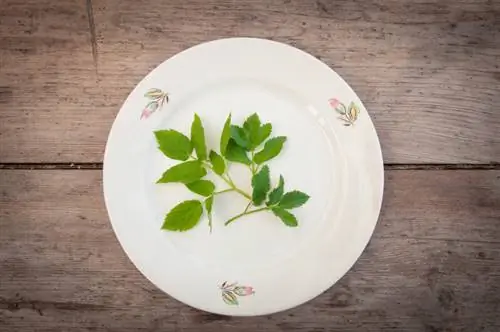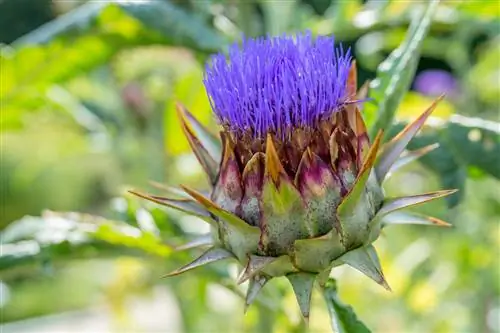- Author admin [email protected].
- Public 2023-12-16 16:46.
- Last modified 2025-01-23 11:20.
Towards the end of the 19th century, Japanese knotweed was introduced to Europe to serve as a productive forage plant for the local, huntable wild animals. However, the stubborn deer did not accept the offer, but the extremely fast-growing and difficult-to-control plant spread inexorably. The neophyte aggressively displaces native plant species, but instead of resorting to chemical treatments, we prefer to use this tasty knotweed species as a vegetable.
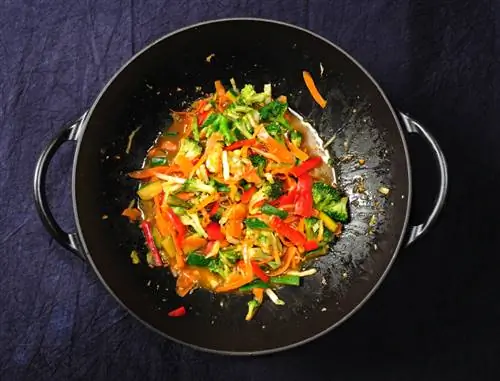
Can you eat Japanese knotweed?
Japanese knotweed can be used as a vegetable plant and tastes similar to rhubarb. It can be prepared in various dishes such as compotes, crumbles or fruit cakes. However, pay attention to the oxalic acid content and only collect young shoots under 20 cm in size.
Japanese knotweed as a food plant
In its East Asian homeland, knotweed has been cultivated and processed as a vegetable plant, similar to our native rhubarb, for many centuries. In fact, the taste is similar to that of rhubarb and the preparation methods are the same. The young shoots of Japanese knotweed are delicious in both savory and sweet dishes, such as compotes, crumbles or fruit cakes.
Why Japanese knotweed is so he althy
Japanese knotweed contains the antioxidant Reservatrol, a plant substance that is also found in blue grapes (and therefore in red wine) and, above all, has a heart-protective effect. In addition, this substance is said to have other he alth effects, some of which have been proven in animal experiments under laboratory conditions. Reservatrol is said to not only protect the blood vessels, but also strengthen the immune system and kill some cancer cells.
Collecting and harvesting Japanese knotweed
The young shoots can be harvested all year round from April, but only if they are no higher than around 20 centimeters. Afterwards they contain too much oxalic acid and they become woody and become inedible. When collecting, pay attention to where you cut the shoots - some years ago, Japanese knotweed was mainly planted on soil heavily contaminated with heavy metals and toxins because it can absorb these in large quantities and thus contribute to the remediation of the soil.
Cultivate Japanese knotweed only in pots
In the garden, the plant should only be cultivated in a pot to prevent uncontrolled spread - just a tiny piece of root is enough.
Preparing Japanese knotweed
You can prepare Japanese knotweed as whole sticks or cut into small pieces, for example as
- Stir-fried vegetables
- Wild rhubarb
- in compote
- Chutney
- Crumble (i.e. baked crispy in the oven with sprinkles)
- on fruit cake
- Jam
- or Relish
Tips & Tricks
However, please note that due to the high oxalic acid content (oxalic acid binds calcium to itself), consumption should be severely restricted for people with arthritis, gout or kidney problems as well as children and that pregnant women should avoid consumption entirely.

